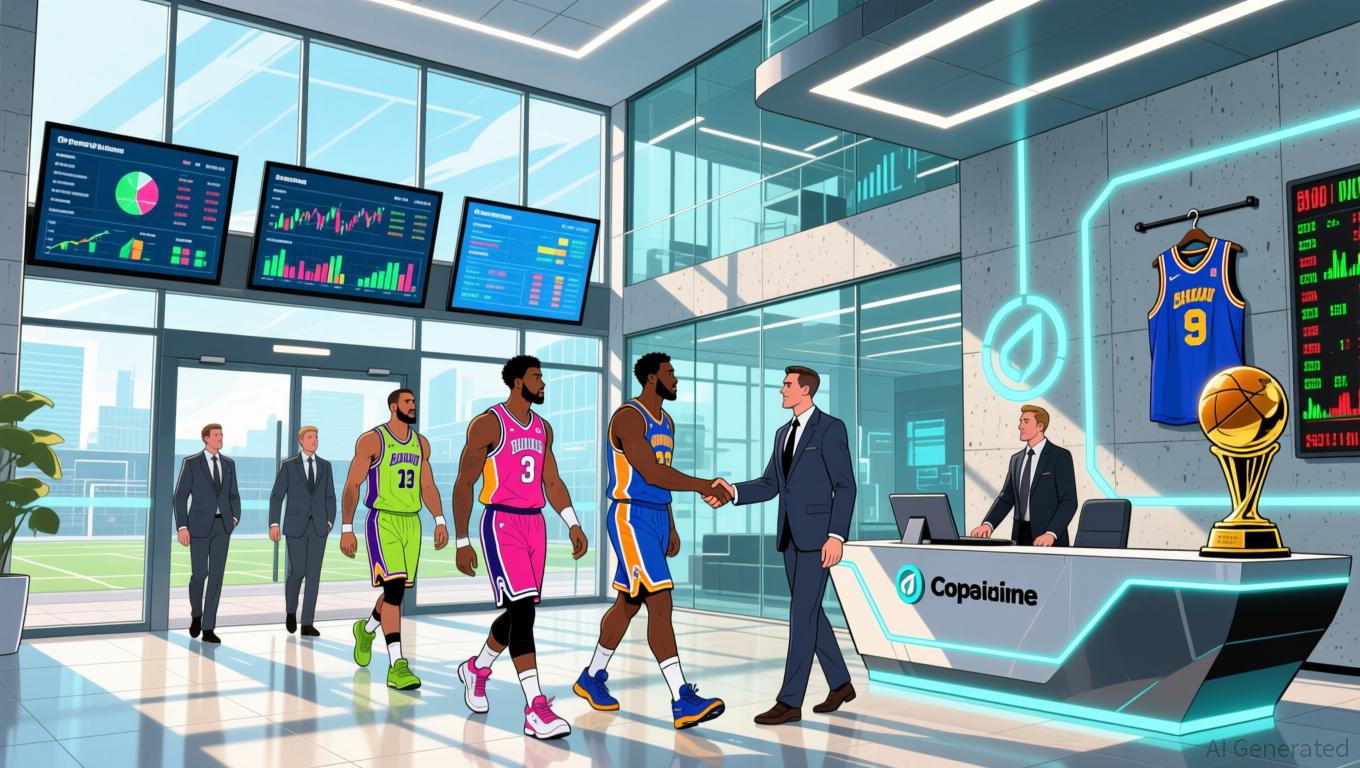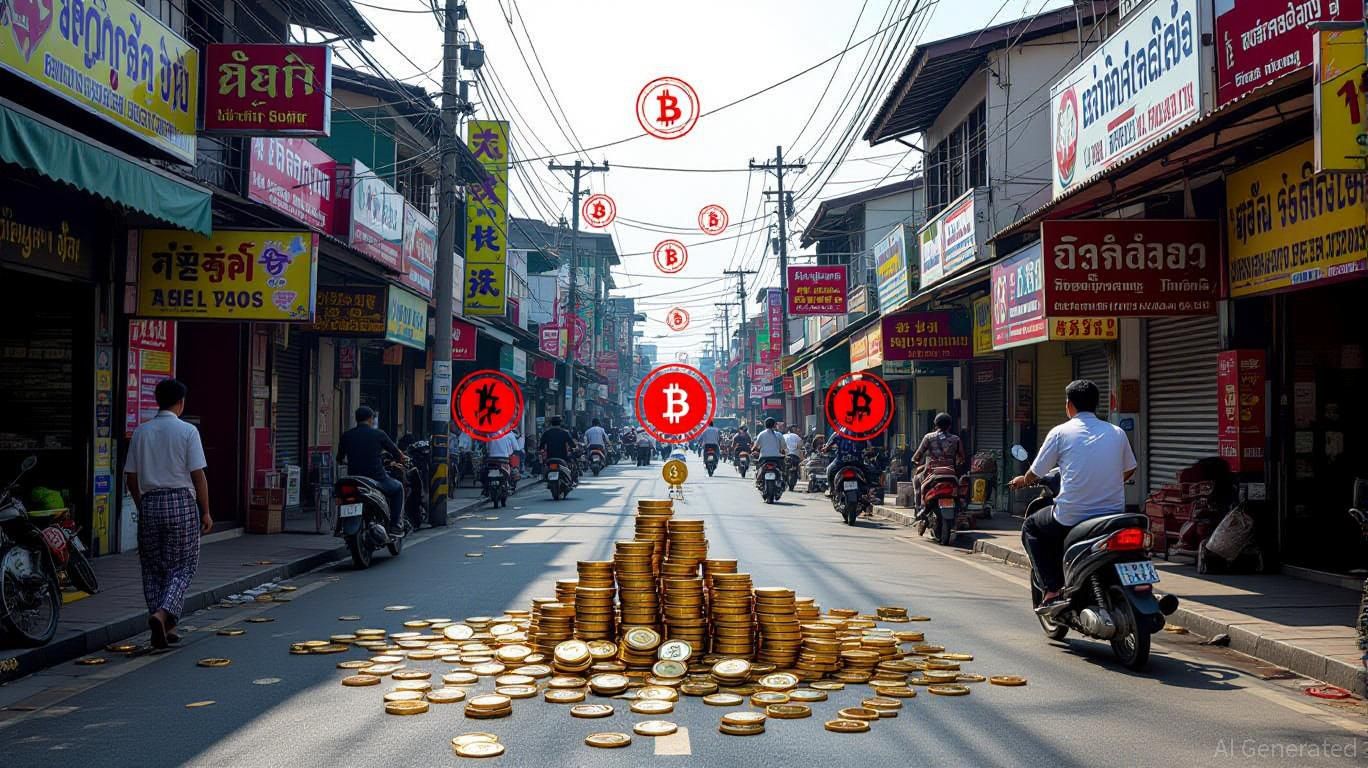Solana's Latest Downturn: Systemic Threats Facing High-Speed Blockchain Platforms
- Solana's $SOL token faces underperformance despite 70M daily transactions and $143B DEX volume, exposing systemic risks in high-throughput blockchain ecosystems. - A $258M whale position liquidation highlights leveraged trading fragility, with cascading losses threatening DeFi protocols and validator staking pools. - Validator reliance on volatile MEV rewards (7% of Figment's delegator income) risks centralization and reward instability amid regulatory uncertainty. - Infrastructure upgrades like UAE vali
A Turbulent Environment: Whale Setbacks and Leverage Hazards
The immediate trigger for Solana’s recent slump was a major liquidation. A well-known whale
Although individual traders play a role, the ecosystem’s heavy dependence on leveraged positions—often backed by $SOL—introduces broader risks. A chain reaction of liquidations could destabilize DeFi platforms and validator staking pools, especially if technical issues or validator outages occur during periods of market stress.
Validator Outcomes and MEV Reliance
Solana’s validator network presents both strengths and weaknesses. In Q3 2025, leading operators such as Figment and Luganodes
This reliance is concerning. MEV earnings are unpredictable, tied to arbitrage and

Infrastructure Strength: Advances and Ongoing Issues
Solana’s infrastructure has undergone meaningful improvements. The introduction of
Nevertheless, these advancements do not entirely resolve past weaknesses. The
Market Sentiment and Institutional Trust
Despite volatility among retail investors, institutional faith remains strong.
Yet, the market’s response to such developments has been subdued. The $SOL price movement in late 2025 (see above) indicates ongoing doubts about Solana’s ability to balance rapid innovation with reliability. Investors remain cautious due to the network’s history of outages and its dependence on speculative DeFi activity.
Long-Term Outlook: Navigating Progress and Risk
Solana’s future success depends on its ability to mitigate systemic risks while preserving its performance advantage. Major obstacles include:
1. Validator Centralization: The top 20 validators
2. MEV Instability: Heavy dependence on MEV makes the network susceptible to market fluctuations and regulatory interventions.
3. Software Vulnerabilities:
On the other hand, Solana’s ongoing infrastructure projects—like Solmate’s UAE validator and stake-weighted QoS—reflect a dedication to strengthening the network. If these measures succeed in broadening validator participation and stabilizing returns, Solana could maintain its status as a top L1 blockchain.
Conclusion
Solana’s recent downturn serves as a warning for high-speed blockchain platforms. While its technical achievements are notable, persistent risks—such as validator concentration and MEV reliance—pose significant long-term challenges. Investors need to balance Solana’s innovative edge with its vulnerabilities, especially as regulatory and market uncertainties continue. For now, institutional backing offers optimism, but only ongoing infrastructure enhancements will secure Solana’s role in the digital asset landscape.
Disclaimer: The content of this article solely reflects the author's opinion and does not represent the platform in any capacity. This article is not intended to serve as a reference for making investment decisions.
You may also like
XRP News Today: XRP ETF Launches with $58M, Challenging Skeptics of Blockchain Utility
Finance’s Latest Frontier: Goldman Sachs Commits $1 Billion to Representing Athletes
- Goldman Sachs acquires majority stake in Excel Sports Management for $1B, entering athlete representation and NIL rights management. - The investment expands the bank's role from sports financial advisor to direct ownership, targeting growth in marketing and executive search. - Goldman's private equity arm aligns with global trends of financial firms capitalizing on high-growth sectors like sports and emerging markets. - A potential U.S.-India trade deal is highlighted as a market catalyst, with India's

The COAI Token Fraud: An Urgent Alert for Cryptocurrency Investors
- COAI token's 2025 collapse exposed systemic DeFi vulnerabilities, costing investors billions through regulatory loopholes and weak governance. - Scam operators exploited jurisdictional gaps in Southeast Asia and the U.S., with $10B+ annual losses attributed to AI token fraud and unclear CLARITY Act definitions. - Conflicting U.S. regulatory frameworks (SEC/CFTC) and partial measures in Hong Kong/Singapore highlight fragmented global oversight of crypto markets. - Cross-border enforcement (e.g., $13.4B se

Walmart Relies on In-House Leaders to Steer Through Retail Hurdles
- Walmart appoints John Furner, a 30-year veteran, as CEO in 2026, succeeding retiring Doug McMillion. - Furner, 51, leads U.S. operations with 4,600 stores and $120.9B Q2 revenue, emphasizing internal leadership continuity. - McMillion's 12-year tenure saw 400% stock growth but faces challenges like tariffs and affordability crises. - New CEO inherits AI-driven transformation goals, with Q3 earnings and SNAP benefit disruptions under investor scrutiny.